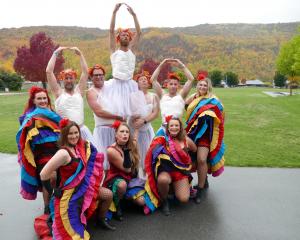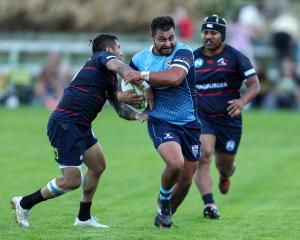The family of Wanaka climber Rob Hall would prefer his body remain on Mt Everest, where he died after reaching the summit in 1996.
The comments come after the Nepalese government announced plans to remove the bodies of at least two climbers during a rubbish clean-up expedition on the world's highest peak.
Mr Hall, 36, had made his fifth successful summit of Everest in May 1996 - a record for any non-Sherpa - but his expedition turned into tragedy as he tried to get a group of weak and stranded climbers off the south summit.
Mr Hall stayed with the slowest climber, American client Doug Hansen.
Frost-bitten, dehydrated and with little bottled oxygen, they bivouaced together just 150m below the summit. Mr Hansen died in the night.
Mr Hall clung on to life for another 30 hours in treacherous snow and cruel winds, without a tent or sleeping bag.
His wife Jan Arnold was able to speak three times to her husband by relayed radio-phone link.
In his last communication, on May 11, he reassured her that he was reasonably comfortable and told her: "Sleep well my sweetheart. Please don't worry too much."
Guy Cotter, a friend who now owns the mountain guide company Mr Hall had operated, Adventure Consultants, said the family would prefer his body to remain on the mountain.
"I don't think there's any desire from the family to go searching for him to then bring him down. I think they're happy to see him up on the mountain undisturbed, if that's the best option," he said.
"If Rob was exposed and not buried under the snow, and people were having to walk past him and walk over him, then it would be appropriate to either move him or remove him from the mountain. So it depends a little bit on the situation."
Attempts to recover Mr Hall's body would be risky, Mr Cotter said.
"To remove someone as high up on the mountain as Rob is, which is only 100 metres below the summit, does put people at risk. So if there's no real benefit to it then my feeling is that it's best left alone."
If Mr Hall's body was recovered his family would prefer him to be cremated, Mr Cotter said.
Clean-up project coordinator Chakra Karki said he respected the sentiments of families whose loved ones had died on Everest.
"It is a holy mountain and our government policy is clear - there should be no dead bodies on the mountain," he told the BBC.
All bodies should be brought below base camp and either buried or cremated, he said.
The Sherpas will clean-up above 8000m, in what is known as the Death Zone because of the thin air and treacherous conditions.
The expedition will set off from the Nepalese capital Kathmandu this weekend and reach the South Col of Everest, just below 8000m, by May 1.
After setting up camp, the team will climb to the summit and work their way down, picking up rubbish as they go - the first time anyone has cleaned up rubbish at this altitude.
Former New Zealand mountaineer Graeme Dingle said he supported the move.
"It's definitely a good thing," he told the New Zealand Herald. "You can't have a mountain that's littered with junk and bodies and God knows what else. It's kind of sacrilegious really."
Mr Dingle said recovering the bodies of at least some of the many people who had died on the mountain was showing respect to them and their families.
Mr Cotter said it was good to see the Nepalese tackling the rubbish problem.
"It's always been a frustration to us to see other expeditions leaving their rubbish up there at times.
"Ironically it's often the Sherpas themselves who are leaving the rubbish up there, because a lot of them don't want to go to the effort of carrying heavy loads of rubbish off the mountain."
Over 300 people have died on the higher slopes of the mountain since 1953.












